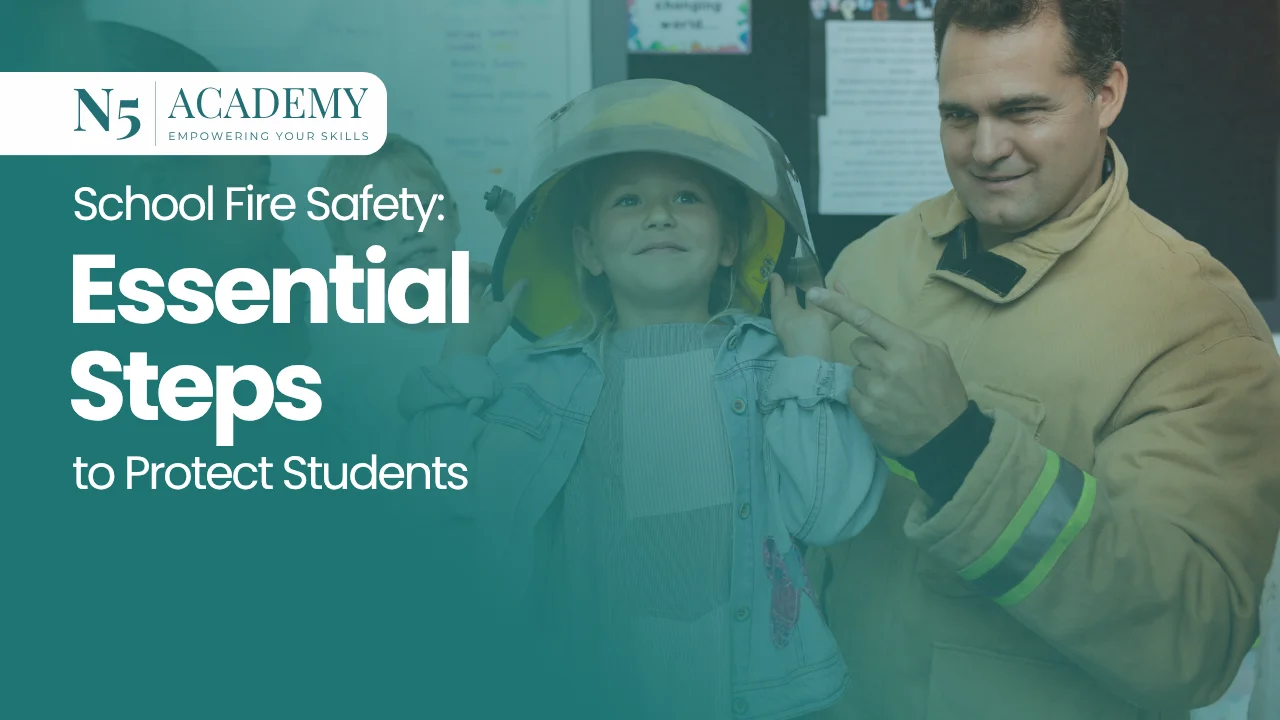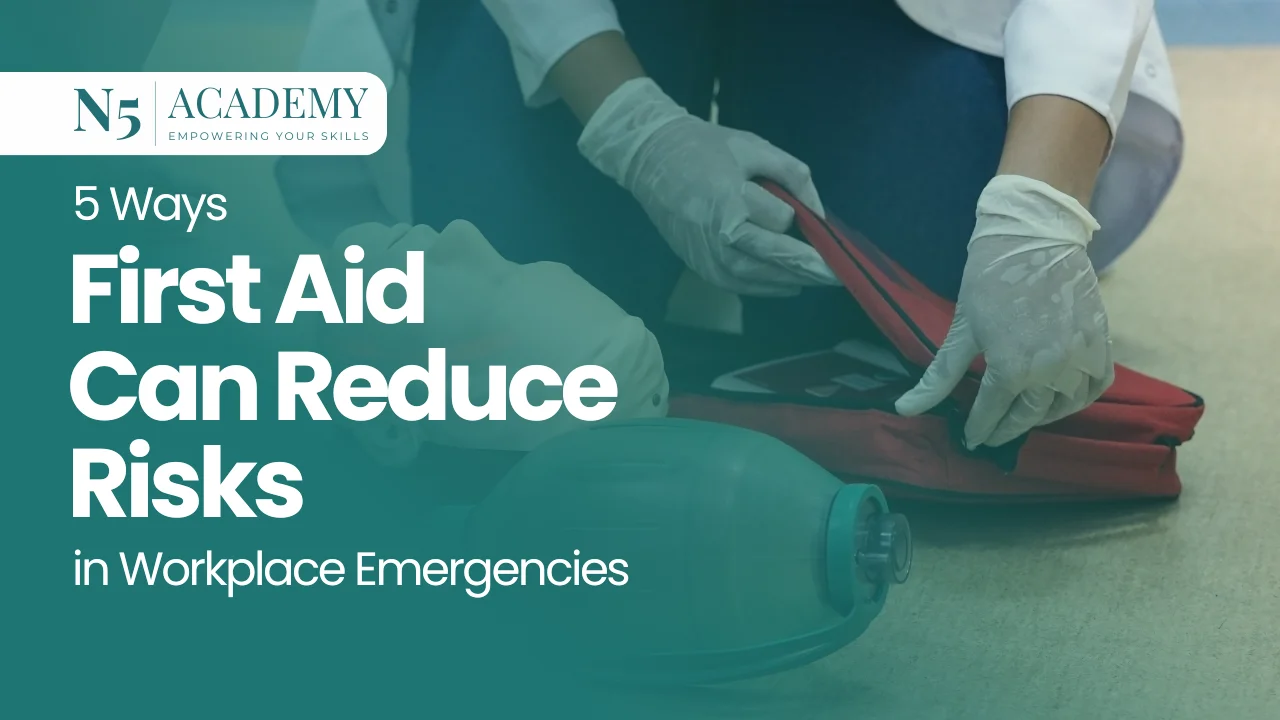

Emergencies can happen anytime. Accidents like slips, falls, heart attacks, and chemical burns are common at work. Each year, many UK workers get hurt or sick from preventable situations. We can’t remove all risks, but we can lessen their effects. This is why first aid in the workplace is so important.
No matter where you work, whether in a high-rise office in London, a warehouse in Manchester, or a cafe in Birmingham, having staff trained in first aid makes a big difference. It can lead to full recovery instead of long-term disability, or even save lives.
In an emergency, the first few minutes are critical. If someone is choking, having a seizure, or bleeding heavily, a trained person can give first aid and greatly lessen the harm.
Imagine a busy warehouse where an employee suddenly collapses from a heart problem. A coworker who knows Basic Life Support steps in right away and performs CPR. They also use an AED successfully. The employee starts to regain a pulse before paramedics get there. This quick action can boost survival rates by more than 70%.
Clear signs for first aid stations, emergency exits, and AED locations can help people respond faster.
Not all emergencies begin dramatically. A paper cut may seem small until it gets infected. An allergic reaction might start as a mild rash but can turn into a life-threatening condition called anaphylaxis.
An employee at a food production facility spills some cleaning solution on their arm. A trained first aider quickly rinses the area with clean water, applies burn gel, and makes sure the worker gets follow-up care. If not for this quick action, a minor chemical burn could have caused serious tissue damage.
This quick response prevents serious injuries, reduces sick leave, and lowers the risk of legal claims, which helps improve workplace health.
Employees do better in places where they feel safe and valued. When workers see that there are trained first aiders nearby, it builds trust and lifts their spirits.
An employee with epilepsy has a seizure in a corporate office. Because the staff completed a first aid course, they quickly put the person in a safe recovery position and kept track of the time. This helps reassure the affected employee and the rest of the team, showing that the company values health and safety.
Believing in emergency preparedness can strengthen teamwork and improve communication during stressful times.
Employers in the UK must follow the Health and Safety (First-Aid) Regulations 1981. They need to provide enough first aid in the workplace, which includes having trained staff, proper equipment, and clear procedures.
Not meeting legal requirements can lead to big fines or legal action. Enrolling your staff in our 3 Day First Aid at Work Course in London ensures you meet these obligations and provides peace of mind.
By following safety rules, you increase insurance credibility and lower premiums. A trained workforce helps maintain high safety standards.
A single first aid course can create big changes in an organisation. Trained people start to notice dangers before they lead to accidents, and they motivate others to do the same.
On a normal day at a construction site, a team leader who is trained in first aid sees uneven scaffolding and stops work. This quick action prevents a fall that could cause serious injury. It also encourages others to report problems without fear.
A safety-first mindset lowers physical risks. It also results in fewer absences, less turnover, and higher productivity in all departments.
The numbers tell a clear story. According to the Labour Force Survey 2022/23:
Hundreds of thousands of workers are affected, and many employers face costs from lost productivity, compensation, and damage to their reputation.
We can reduce or prevent many of these problems with effective first aid systems and quick responses. Investing in first aid benefits is not optional; it’s a smart strategy.
A stocked first aid box isn’t enough. You also need knowledge, confidence, and practise. This is why professional training is important.
Why stop at just one course? Building a fully prepared team involves more than just the basics.
These courses improve your organisation’s ability to manage all types of emergencies and align with health and safety standards.
Take action before an accident occurs. Being proactive saves time, money, and lives.
Start a monthly safety spotlight to keep health and safety in focus. This can include newsletters, posters, or lunchtime learning sessions.
Workplace emergencies can happen suddenly. However, with preparation, knowledge, and the right tools, you can lessen their impact or even stop them from happening.
Training your team in first aid for workplace accidents not only saves lives but also boosts confidence and creates a caring culture in your organisation.
Take action today. Keep your people safe. Keep your business safe. Choose safety.
We help you forge a successful career in health and safety. We’re a UK-based company providing top-notch safety training courses that adhere to industry standards.